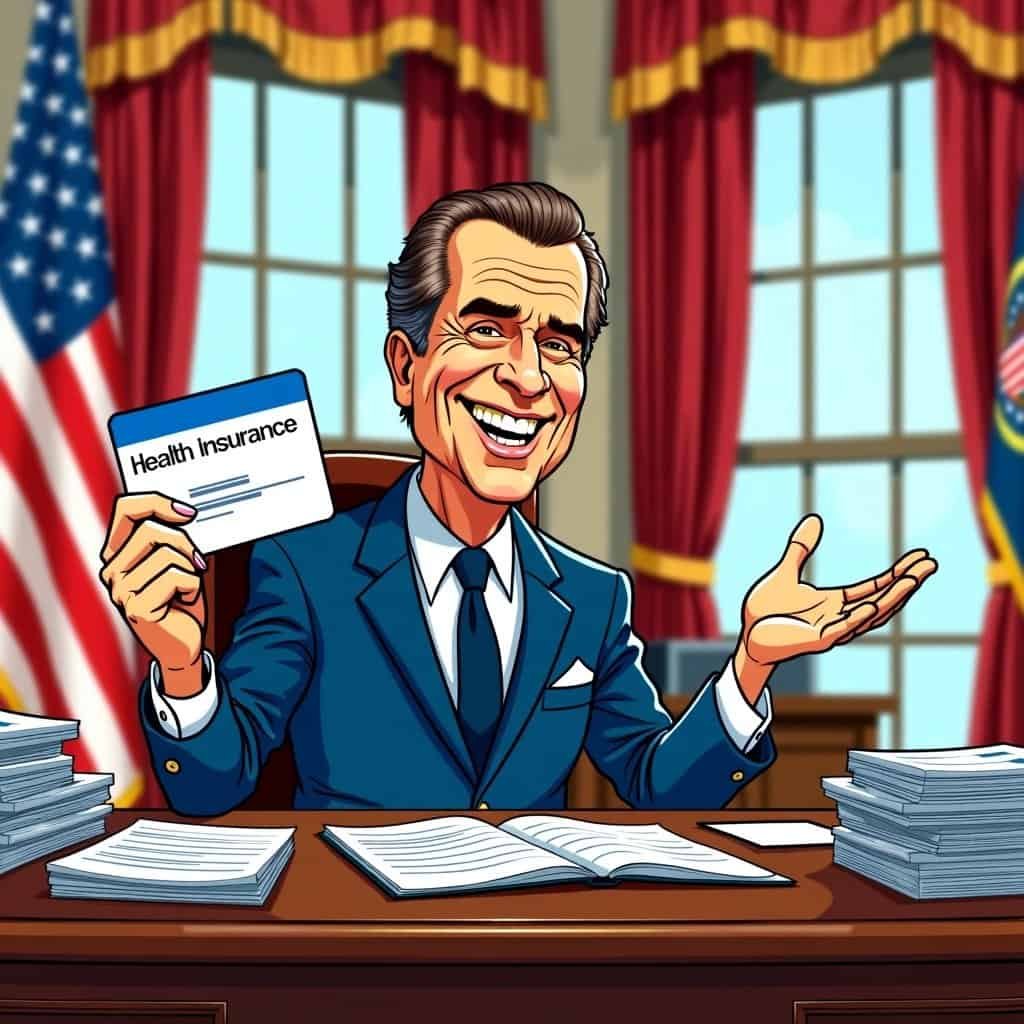In the colorful tapestry of American history, Richard Nixon stands out as a figure who never fails to raise eyebrows and spark laughter—sometimes the nervous kind. Known for his clever political moves and headline-grabbing antics, Nixon’s Comprehensive Health Insurance Plan Proposal was a venture that had a distinct flavor of conservative practicality. So, buckle up and get ready for an amusing journey through Nixon’s grand healthcare vision that never quite made it to the finish line.
Picture this: It’s the 1970s, the era of bell-bottoms and disco fever. President Nixon drops a bombshell that would make today’s Democrats do a double-take: a comprehensive health insurance plan! Yes, you heard that right. If cable news had been around, this news would have made a splash bigger than a whale breaching in the Pacific!
While modern progressives might scoff at the idea of Republicans meddling with healthcare, Nixon’s plan might just prove them wrong. Who would’ve thought a Republican would try to save healthcare? What was this mysterious plan, you ask? Well, in a nutshell, his proposal aimed to provide health coverage to all Americans through employer mandates. It’s like he was trying to turn a potential fumble into a touchdown in the policy game!
The Nixon Plan: A Conservative Approach to Universal Healthcare
| Key Elements | Description |
|---|---|
| Employer Mandates | Required employers to provide health insurance to employees |
| Private Market | Preserved the role of private insurance companies |
| Universal Coverage | Aimed to provide health coverage to all Americans |
| Conservative Values | Emphasized contribution over compulsion |
Let’s not overlook the key conservative principle at play here: contribution over compulsion. Instead of forcibly taking away hard-earned money to create public systems that might not last, as often seen in liberal policies, Nixon aimed for a team effort. He thought employers should play a part in offering insurance, contributing to the nation’s health while still giving the private market room to grow!
Now, you’re probably wondering, what caused this grand plan to fall apart? Well, it ran headfirst into competing policies in Congress, and disagreements led to the usual legislative deadlock. In the end, nothing came of it, and the big healthcare dream faded away. But let’s give credit where it’s due: Nixon dared to be different—an odd mix of progressive goals wrapped in a tough conservative shell.
Lessons from Nixon’s Healthcare Gambit
- Compromise can lead to innovative solutions
- Conservative approaches can address traditionally liberal issues
- Healthcare reform doesn’t have to mean expanding government control
- Bipartisan efforts can sometimes yield unexpected results
It raises an interesting question—have we forgotten how powerful compromise can be? Maybe it’s not about achieving the liberal dream with a socialist flavor that breeds dependence, but about keeping our freedoms and encouraging self-reliance. After all, shouldn’t healthcare aim to make individuals stronger rather than more reliant on the government?
So, there you have it. The Tricky Dick welfare moments where Democrats and Republicans did more than just exchange pleasantries. It shows that conservatives can think creatively, tackle tough issues, and even surprise us with a touch of humor. The takeaway? Perhaps a dash of conservative creativity was just what the doctor ordered for the 1970s healthcare system.
At the end of the day, Nixon’s bold move in health insurance remains a shining example of conservative pragmatism, perhaps highlighting a rarely considered truth: that sometimes, even a conservative has to propose a big system change for the greater good. And who knows, if Tricky Dick had pulled it off, maybe the path to sustainable healthcare wouldn’t be such a liberal maze today. Now that’s a policy worth a good chuckle!
Table of Contents
- The Nixon Plan: A Conservative Approach to Universal Healthcare
- Lessons from Nixon’s Healthcare Gambit






